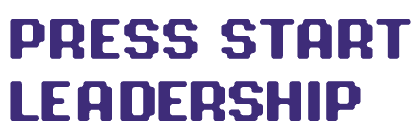Vision to Victory: Strategies for Staying True to Your Game’s Core Concept Through Development Hurdle
In the labyrinth of video game development, one of the greatest challenges is staying true to the original vision of the project. The path from concept to a fully-fledged game is fraught with potential diversions – from evolving market trends to team dynamics. This comprehensive guide aims to equip game developers with strategies for maintaining focus on their central vision, ensuring that the heart of their game remains intact from inception to launch.
Defining and Documenting Your Central Vision
The starting point of any successful game development project is a clearly defined and well-documented central vision. This vision serves as the guiding star throughout the development process.
Articulating Your Vision: Begin by articulating a clear and concise vision for your game. What is the core concept? What unique experience or story are you aiming to deliver? This vision should encapsulate the essence of what makes your game unique and compelling.
Creating a Vision Document: Transform your vision into a tangible document. This vision document should detail the game’s concept, target audience, key features, art and design style, and core gameplay mechanics. It acts as a reference point for every decision made during development.
Building a Team Aligned with Your Vision
The team working on a game can significantly influence its direction. It’s crucial to build a team that understands and is aligned with your central vision.
Hiring for Vision Alignment: When building your team, consider candidates’ alignment with your game’s vision. During interviews, discuss the vision and gauge their enthusiasm and understanding of it.
Regular Vision Alignment Sessions: Conduct regular meetings to reinforce the vision among your team members. These sessions can serve as reminders of the game’s core goals and help keep everyone on the same page.
Effective Communication of the Vision
Effective communication is key to keeping a project on track. Ensuring that every team member understands and remains committed to the central vision is a continuous process.
Clear and Consistent Messaging: Communicate your vision clearly and consistently. Use your vision document as a basis but also find ways to integrate the vision into everyday conversations and decisions.
Visual and Interactive Tools: Utilize visual aids like concept art, mood boards, or prototypes to convey the feel and direction of the game. Interactive tools like playable prototypes can help team members experience the vision first-hand.
Managing Scope to Preserve the Vision
Scope creep – the gradual expansion of a project beyond its original objectives – can dilute a game’s central vision. Managing the scope effectively is essential for staying on target.
Setting Boundaries: Define clear boundaries for your project. What are the non-negotiable elements that must be included, and what are the areas where flexibility is possible?
Regular Scope Reviews: Regularly review the scope of the project to ensure it remains aligned with the central vision. Be prepared to make tough decisions to cut features or content that deviate from the core concept.
Flexible Adaptation Without Losing Sight of the Vision
While sticking to your vision is important, flexibility in the face of feedback and challenges is also crucial. The key is to adapt without losing sight of the central vision.
Balancing Feedback and Vision: Learn to balance feedback with your vision. While player and stakeholder feedback is valuable, weigh it against your game’s core objectives to decide what to incorporate.
Evolving the Vision Responsibly: Be open to evolving your vision as the project progresses. Changes should be made responsibly and always with the central concept in mind.
Leadership and Decision-Making in Line with Vision
Strong leadership is pivotal in keeping a game development project on track. Leaders must consistently make decisions that align with the central vision.
Vision-Centric Leadership: As a leader, always refer back to your vision when making decisions. Whether it’s about design, technology, or marketing, ask how each decision supports the central concept.
Empowering Team Members: Empower your team members to make decisions in line with the vision. This not only fosters a sense of ownership but also helps in maintaining a consistent direction.
Utilizing Milestones to Gauge Vision Alignment
Milestones are not just markers of progress; they are opportunities to assess how closely the development aligns with the initial vision.
Setting Strategic Milestones: Set milestones that specifically aim to measure the alignment with the vision. These should be strategically placed at points where key components of the game are developed or integrated.
Reviewing and Adjusting at Milestones: Use these milestones as checkpoints. Review the work done and adjust course if necessary to ensure that the development remains true to the original concept.
Aligning Technology with Vision
The choice of technology can significantly impact the ability to realize your game’s vision. It’s crucial to select tools and platforms that align with and support the game’s core concept.
Technology Selection Based on Vision: When choosing game engines, software, and other development tools, consider how well they align with and facilitate your vision. For instance, does a particular engine better support the art style or gameplay mechanics you envision?
Continuous Technology Evaluation: As technology evolves rapidly, regularly assess whether the tools you are using remain the best fit for your vision. Be open to adopting new technologies that could enhance the realization of your vision.
Cultivating a Studio Culture That Supports the Vision
Fostering a studio culture that resonates with your game’s vision encourages every team member to contribute towards a unified goal.
Embedding Vision in Studio Culture: Make your game’s vision a part of your studio’s culture. Regularly communicate the vision in creative and engaging ways, ensuring it’s at the forefront of every team member’s mind.
Encouraging Ownership of Vision: Empower your team to take ownership of the vision. When team members feel personally invested in the game’s core concept, they are more likely to make contributions that align with and enhance that vision.
Adapting to Market Changes While Staying True to Vision
The video game market is dynamic, and being adaptable is key. However, adapting to market changes should not come at the cost of your central vision.
Market Awareness and Vision Integrity: Stay informed about market trends and player preferences, but weigh these against your vision. Determine which trends align with and can enhance your vision, and which may detract from it.
Flexible Yet Focused Adaptation: Adapt to market changes in ways that are flexible yet still focused on your core vision. This could involve minor tweaks in gameplay, narrative elements, or marketing strategies rather than overhauling fundamental aspects of your game.
Effective Decision-Making in Line with Vision
Throughout development, numerous decisions will need to be made, from design choices to marketing strategies. These decisions should consistently reinforce and align with your central vision.
Vision-Based Decision Framework: Develop a decision-making framework based on your vision. This framework should guide how decisions are made at various stages of development and in different aspects of your project.
Handling Conflicting Opinions: When faced with conflicting opinions or ideas, refer back to your vision document. Use it as a guide to navigate these conflicts and make decisions that best serve the game’s core concept.
Measuring the Success of Vision Implementation
Measuring how successfully your vision has been implemented is crucial for both the current project and future endeavors.
Establishing Vision Success Metrics: Define what success looks like in terms of your vision. This might include player engagement levels with key aspects of your game, critical reception focusing on the elements central to your vision, or internal team feedback.
Post-Launch Reviews: Conduct thorough post-launch reviews to assess how well the final game aligns with the initial vision. Gather feedback from players, critics, and your team to evaluate areas of success and those needing improvement.
Final Thoughts:
Staying true to your central vision throughout the development of a video game is a challenging yet rewarding endeavor. It requires a strategic approach to decision-making, team management, and adaptation to external changes. By aligning technology and studio culture with your vision, making informed decisions, and continuously evaluating your progress, you can ensure that your game reflects the unique concept you set out to create.
As leaders in the video game industry, the ability to maintain focus on a central vision while navigating the complexities of game development is a key driver of innovation and success. Embrace these strategies to bring your visionary projects to life, captivating players and shaping the future of interactive entertainment.
Thank you for reading this article to the end. I hope it has been informative and helpful. If you’d like to learn more about the topics we covered, I invite you to check out my podcast and my YouTube channel where I delve into these subjects in more depth.
Additionally, I would love to stay in touch and keep you updated on all the latest developments and insights in the world of leadership. That’s why I encourage you to sign up for my newsletter. Not only will you receive regular updates, but as a thank you for joining, I will also send you my free eBook, “5 Heroic Leadership Skills.” This eBook is packed with practical tips and strategies that will help you take your leadership skills to the next level.
So don’t wait! Sign up for my newsletter today and start your journey towards becoming a more effective and inspiring leader. I can’t wait to hear from you.
Work With Me!
If you’re on the quest to elevate your team’s leadership, production, or game design capabilities, I’m here to assist! Leveraging extensive experience and a strategic approach, I offer personalized audits, bespoke workshops, and leadership retreat facilitation to drive your team toward excellence. My commitment is to provide efficient, reliable, and proven support, ensuring you have the tools and insights needed to thrive. Ready to unlock your team’s full potential and achieve unparalleled success? Don’t hesitate—Press Start on your journey to transformation today! Feel free to reach out directly to discuss how we can tailor a solution to meet your unique needs and goals. Let’s connect and take your team’s performance to the next level!
🔗 www.pressstartleadership.com
📧 contact@pressstartleadership.com


